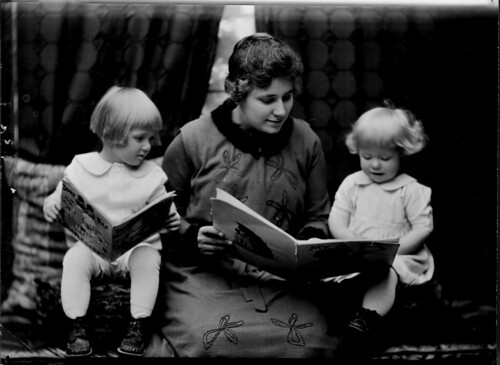Readers, Printers, and their Records

Have you ever wondered what people are reading or what was available to them to read? Amazon’s stats and the New York Times Best Sellers list makes it fairly easy to track what is popular, but these figures are largely based on sales or production runs. I’d like to suggest two sources of information for finding out what actual readers thought about books, how books and ideas influenced lives, and what was available to readers to read from the early modern period through the early 20th century.
RED: The Reading Experience (http://www.open.ac.uk/Arts/reading/) documents what individuals in Great Britain and Canada actually read from 1450 – 1945. Drawing on entries in diaries and letters, books and illuminations from manuscripts, this freely-accessible, online database from The Open University in England is making it possible to search for what texts were read by or to people of all ages and walks of life. Evidence also documents the reading as public/private, silent/aloud, by gender, age, location, and socio-economic status (as available). As much information as possible is given about the text being read (author, title, publication, format) and a complete citation is given to the source of the information. RED is both a grant-funded and a volunteer effort so it is not a complete database, however, it is worth looking into if you are working with British and Canadian authors.
The second source is the Records of the Worshipful Company of Stationers and it’s companion book catalog The Stationers’ Company Archive : an account of the records 1554-1984. The Stationers Company has its origin in the late middle ages as a bookseller’s guild, first of manuscripts, then of printed books as the technology of the printing press replaced handwritten books. The Stationers supervised their members as professional organizations still do (think of the Modern Foreign Language Association or the American Historical Association), and eventually defended their member printers from what we would today call copyright infringement (https://stationers.org/the-hall-heritage.html). They also trained up apprentices and journeymen in the trade (and still do; see their website at https://stationers.org/).
The records of the Stationers Company survived the Great Fire of London, the bombings of WWII, and the effects of time. They provide a great insight into membership in the Company, books published, financial information (of the company, it’s charities, and pensions to its members), the lives of printers (their apprentices and journeymen), disputes among members and between the Company and various government agencies, cost of living, and a variety of other data. Our copy of the records on microfilm is the most complete published (from 1554 to 1920 are included) and supersedes earlier printed copies of the records. The guide to the microfilm and the book catalog direct you to the correct reel of microfilm. Our ScanPro microform scanners in the Jones Information area make it easy to convert the microfilm to a PDF document that you can download to a flash drive and scan using Adobe Acrobat.
If you want to discuss how either of these resources might be useful to you in your research, please set up an appointment with Eileen M. Bentsen or email me at Eileen_Bentsen@Baylor.edu.
Leave a Reply